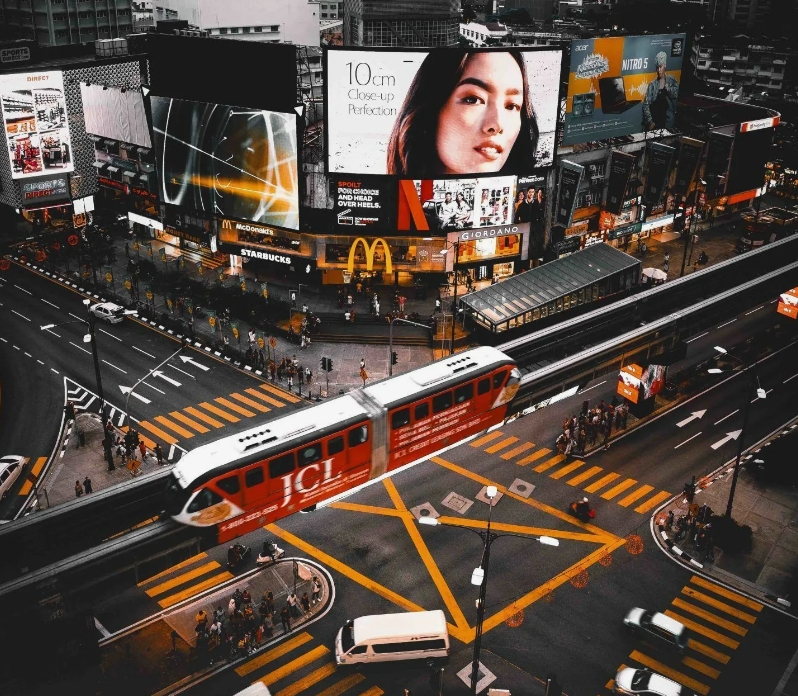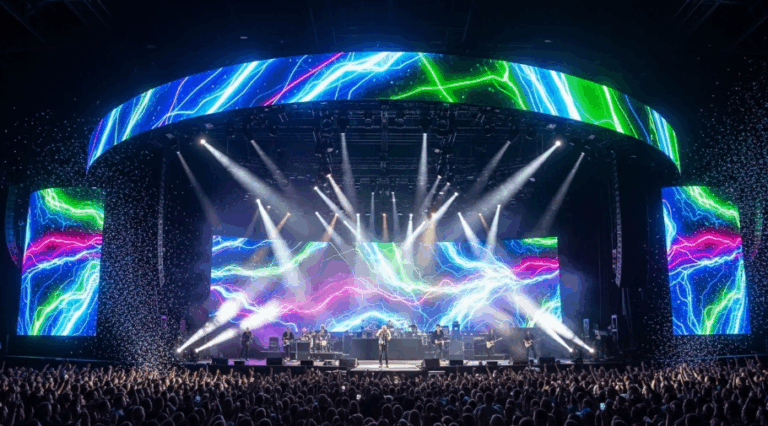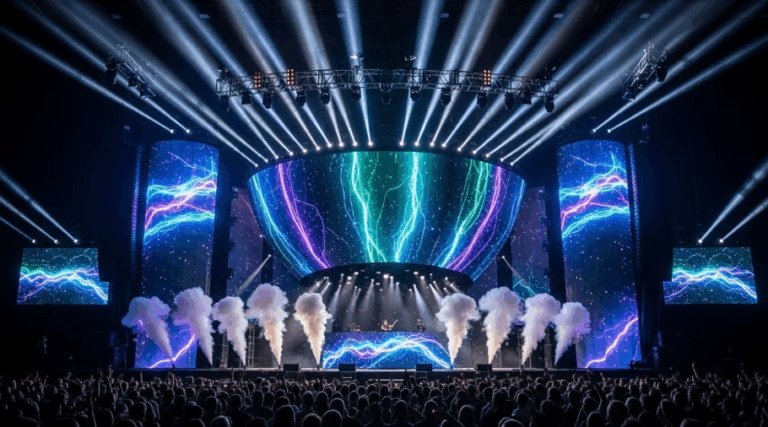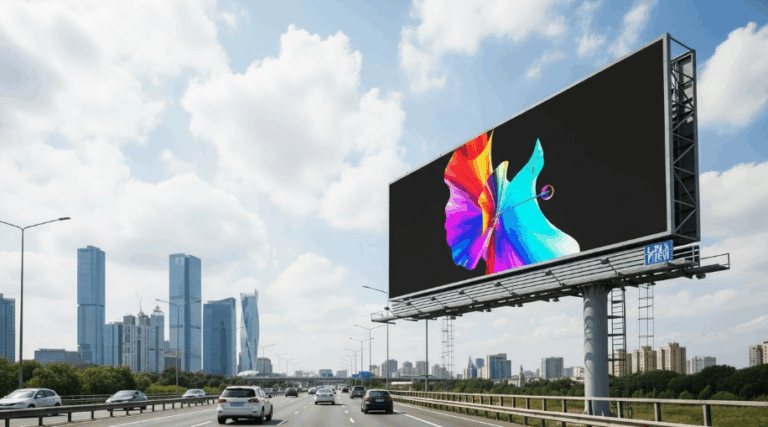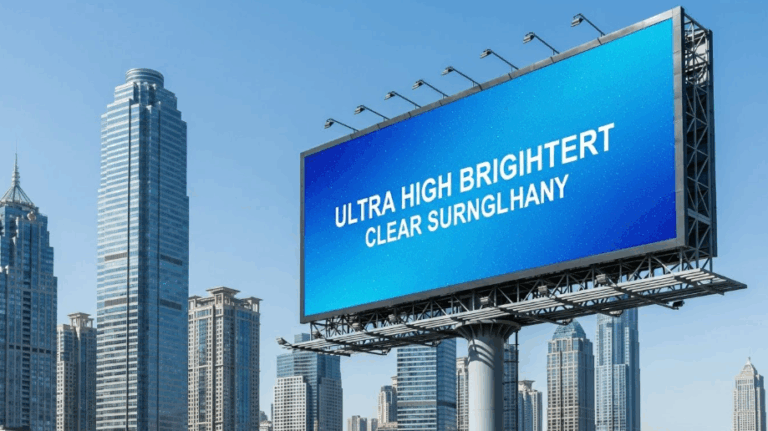Table of Contents
-
What is DOOH?
-
Differences Between DOOH and Traditional Outdoor Advertising
-
The Central Role of LED in DOOH
-
Main Types of DOOH LED Displays
-
Key Technical Parameters of OOH LED Displays
-
Choosing the Right Supplier
-
Installation and Maintenance Guide
-
Frequently Asked Questions
-
Conclusion
As technology advances at a rapid pace, our urban landscapes are being transformed by a highly impactful visual medium—DOOH LED displays. These are more than just glowing panels; they are the new darling of digital-era outdoor advertising. With dynamic, interactive, and precise communication advantages, they are reshaping how we perceive out-of-home media.
1. What is DOOH?
DOOH stands for Digital Out-of-Home advertising. It refers to all types of advertising formats that use digital technology in public outdoor spaces. In simple terms, it’s an upgrade from static billboards to digital screens capable of playing videos, animations, and multimedia content.
The earliest form of DOOH can be traced back to New York’s Times Square in the 1990s, but its real boom began after 2010. With the maturity of LED display technology and the growth of network communication, DOOH evolved from one-way broadcasting to interactive communication.
According to a report by MarketsandMarkets, the global DOOH market reached $18 billion in 2023 and is projected to surpass $32 billion by 2028, with a CAGR of over 10%.
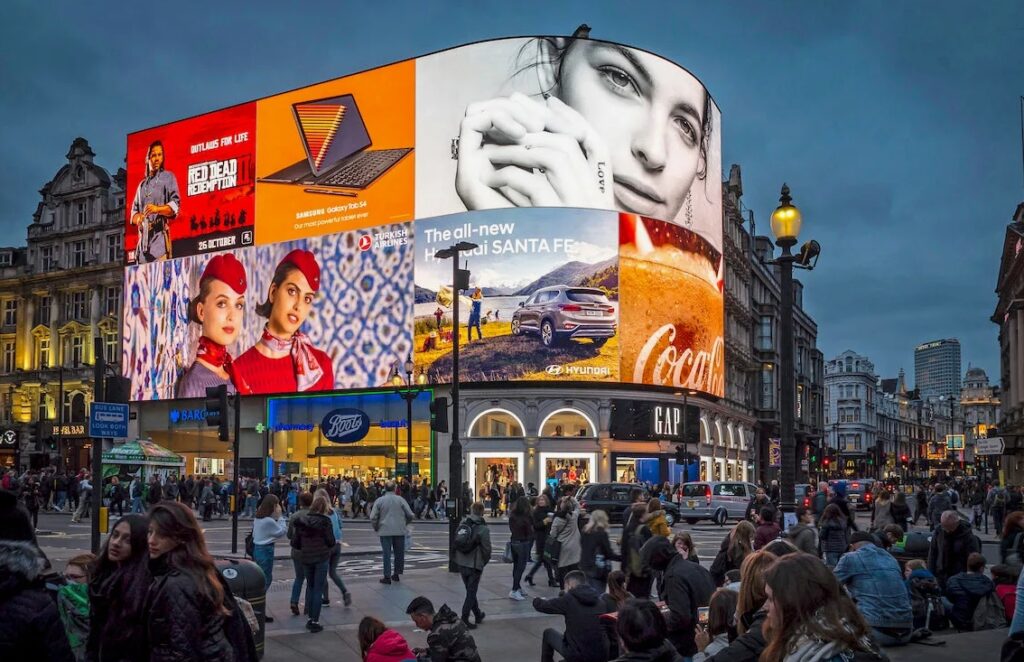
2. Differences Between DOOH and Traditional Outdoor Advertising
| Dimension | Traditional Outdoor Ads | DOOH Digital Ads |
|---|---|---|
| Content Update | Static, manually replaced | Dynamic, multimedia, remotely updated |
| Communication Style | One-way, non-interactive | Interactive, supports real-time targeting |
| Precision Marketing | Weak | Supports data and behavioral analytics |
| Long-term Cost | High due to manual labor | Higher upfront, but lower operating cost |
3. The Central Role of LED in DOOH
Among various display technologies used in DOOH, LED (Light Emitting Diode) displays hold a dominant position, thanks to several irreplaceable advantages:
-
Ultra-High Brightness: LED screens remain clearly visible even under direct sunlight.
-
Rich Colors & Contrast: Vivid colors and deep contrast provide better image layers and expressiveness.
-
Seamless Splicing & Large Sizes: LED modules can be assembled into large, seamless screens of various shapes.
-
Durability & Weather Resistance: High-quality LED displays resist dust, water, moisture, and corrosion, suitable for harsh outdoor conditions.
-
Long Lifespan & Energy Saving: Long service life and increasing energy efficiency lower operating costs.
4. Main Types of DOOH LED Displays
– Large Outdoor LED Billboards
Installed in high-traffic areas like landmarks, transit hubs, and shopping centers. They are large, bright, and highly impactful—ideal for brand exposure.
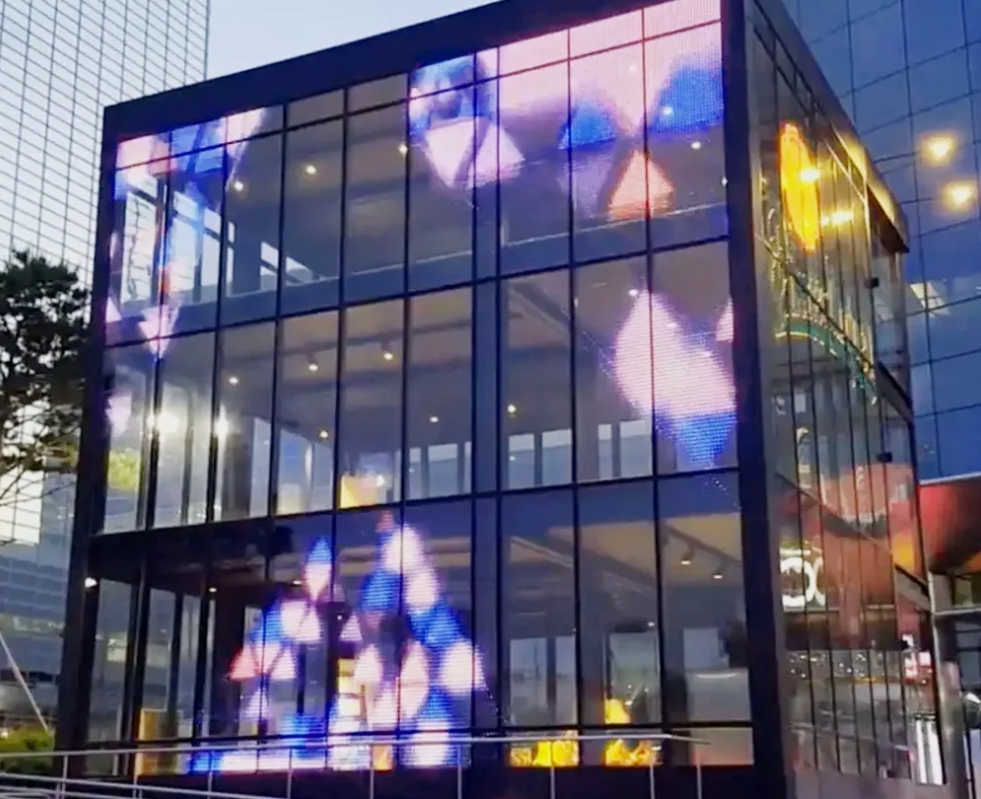
– LED Window Screens & Transparent Displays
Placed in retail windows to attract passersby with promotional videos. Transparent displays offer creative, see-through effects without blocking interior views.
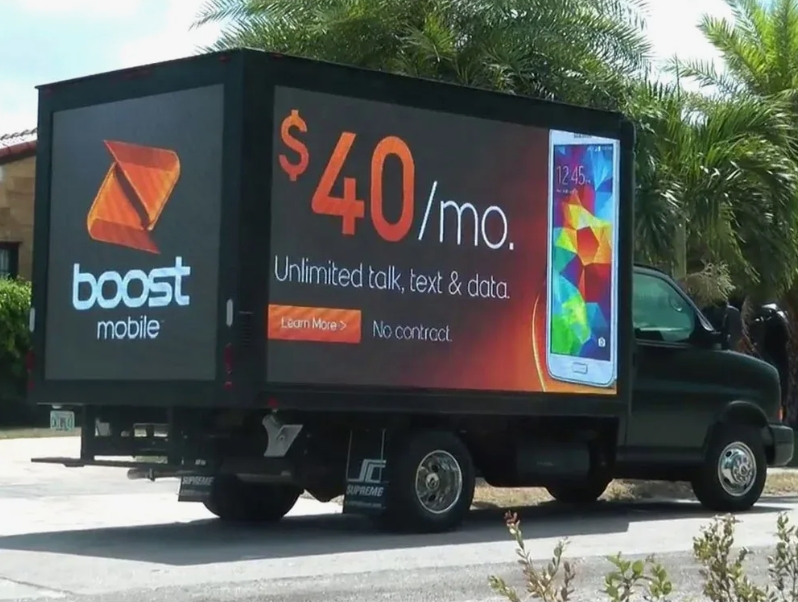
– LED Advertising Vehicles & Mobile DOOH Units
LED screens mounted on vehicles offer flexible and wide coverage, ideal for penetrating locations inaccessible to fixed billboards.
5. Key Technical Parameters of DOOH LED Displays
– Resolution & Pixel Pitch
Pixel pitch (P-value) is the distance between LED pixels. Smaller pitch = higher resolution.
Common pitches:
-
P6, P8, P10 for large outdoor displays (long viewing distances)
-
P2.5, P3, P4 for close-viewing applications like bus stops or retail windows
(Source: Macroblock Tech)
– Brightness & Contrast
Brightness (measured in nits) should exceed 5000–10000 nits for outdoor visibility.
High contrast ensures detail-rich, vibrant visuals.
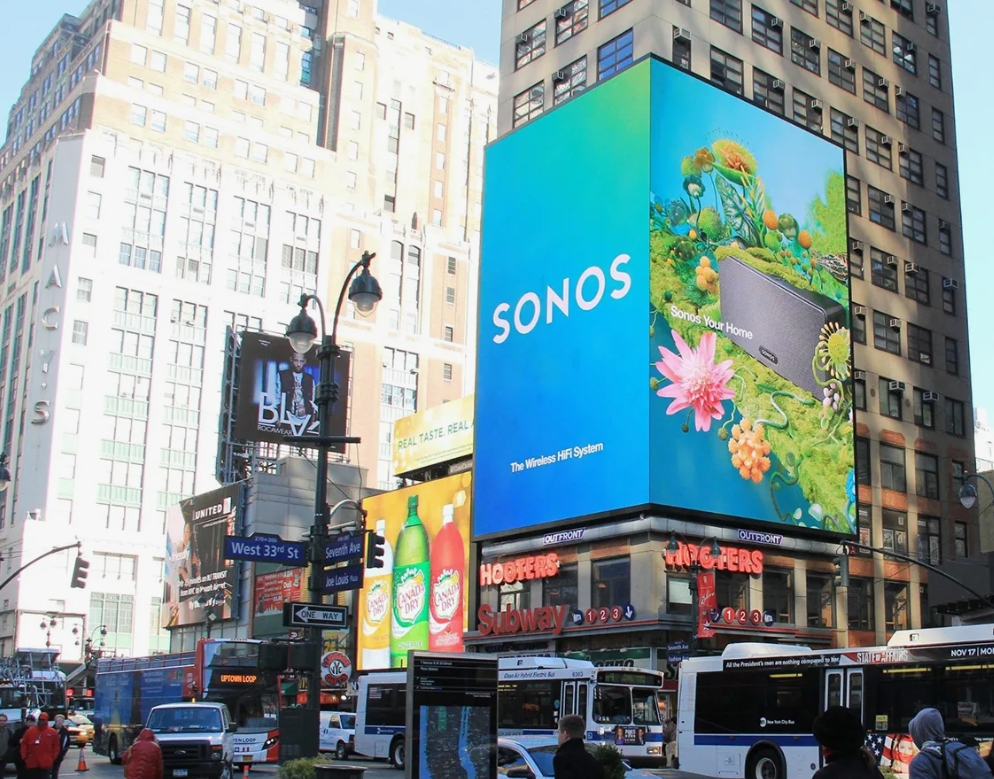
– Protection Rating & Weather Adaptability
An IP65 rating ensures waterproof and dustproof performance. Also consider UV resistance, salt mist protection, and corrosion resistance.
– Control System & Remote Management
Advanced control systems support various content formats and remote updates via cloud platforms, enabling real-time publishing and flexible operations.
6. Choosing the Right Supplier
Evaluation Criteria:
-
Product Quality: Ensure compliance with standards such as SJ/T 11711-2018 or GB/T 43978-2024. Check LED chips, driver ICs, brightness, and color uniformity.
-
After-Sales Service: Includes installation support, training, rapid troubleshooting, and spare parts supply.
-
Content System Support: Intuitive software, format compatibility, data analytics capabilities.
Comparing Chinese Manufacturers vs. International Brands
-
Chinese Brands (e.g., SoStron, Leyard, Absen): Cost-effective, customizable
-
International Brands (e.g., Daktronics, Samsung): Higher-end, strong brand trust
Common Procurement Mistakes to Avoid
-
Focusing only on price
-
Chasing the highest specs regardless of need
-
Ignoring outdoor durability
-
Underestimating the importance of content management systems
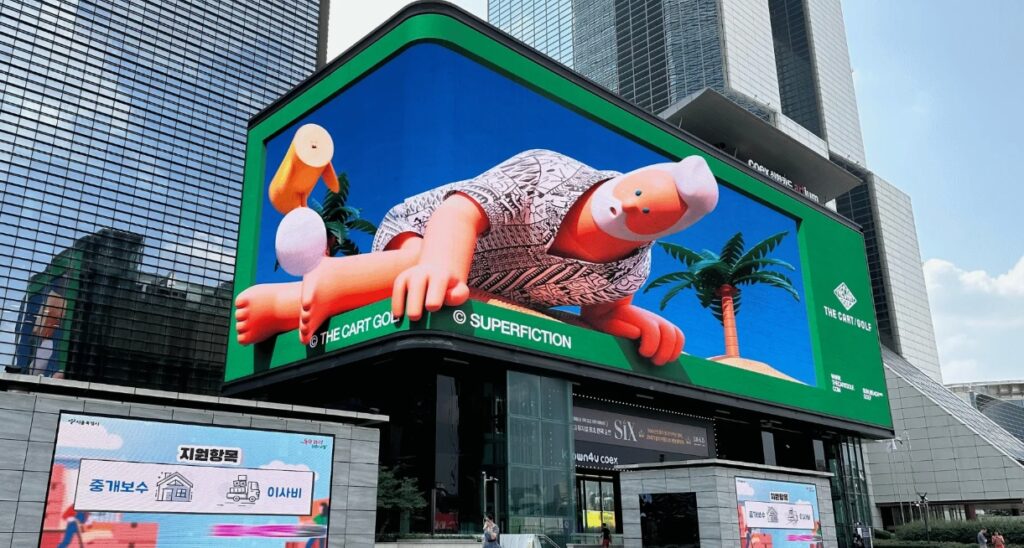
7. Installation and Maintenance Guide
Project Planning & Site Evaluation
Consider viewing distance, angles, sunlight direction, and surrounding obstructions.
Power & Structural Considerations
Requires dedicated power lines and structural verification for wind and seismic resistance.
Maintenance Tips
-
Regularly inspect modules, wires, and waterproof seals
-
Implement system backups and emergency plans
-
Opt for modular design for easy replacements
8. Frequently Asked Questions
Q1: What are the cost components of a DOOH LED display?
A:
-
Screen hardware (based on pixel pitch, brightness, protection, size, LED/IC brands)
-
Control system (sending/receiving cards, server, software)
-
Power infrastructure (cables, cabinets, lightning protection)
-
Content production and manpower
-
Government approvals and site rent
Key pricing factors: Pixel pitch, size, brightness, protection level, brand, complexity, and content services.
Q2: What’s the typical lifespan of outdoor LED displays?
A: High-quality displays have a design life of over 100,000 hours (20+ years at 12 hours/day), depending on usage environment and maintenance.
Q3: How to evaluate the display performance of a DOOH LED screen?
A:
-
Brightness & Uniformity
-
Color Accuracy & Saturation
-
Contrast & Grayscale Levels
-
Refresh Rate (high = smooth videos)
-
Viewing Angle consistency
-
Dead Pixel Rate
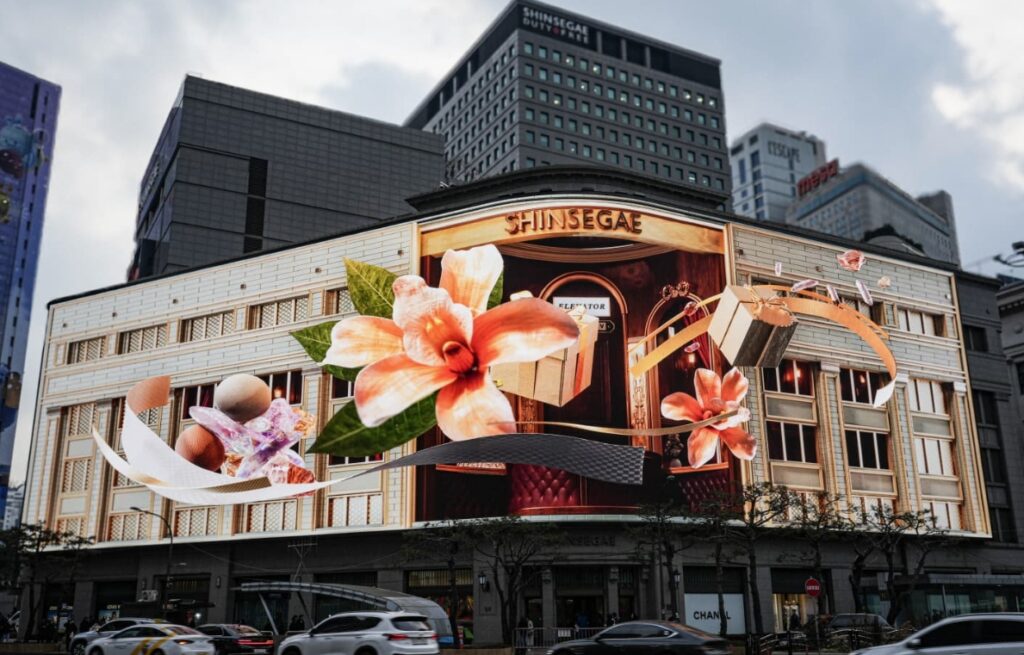
9. Conclusion
DOOH LED displays are redefining how people engage with information and brands. Compared to traditional media, DOOH offers high attraction, real-time updates, and precise targeting, making it a top choice for advertisers.
As technologies like 5G, AI, IoT, and glasses-free 3D continue to evolve, DOOH LED displays will become smarter, more expressive, and more interactive—bridging the gap between brands and consumers and emerging as a key force in the future of digital advertising.
References:
-
Digital Out of Home Market worth $32.1 billion by 2025
https://www.marketsandmarkets.com/PressReleases/dooh.asp -
Outdoor Advertising Association of America
https://oaaa.org/

